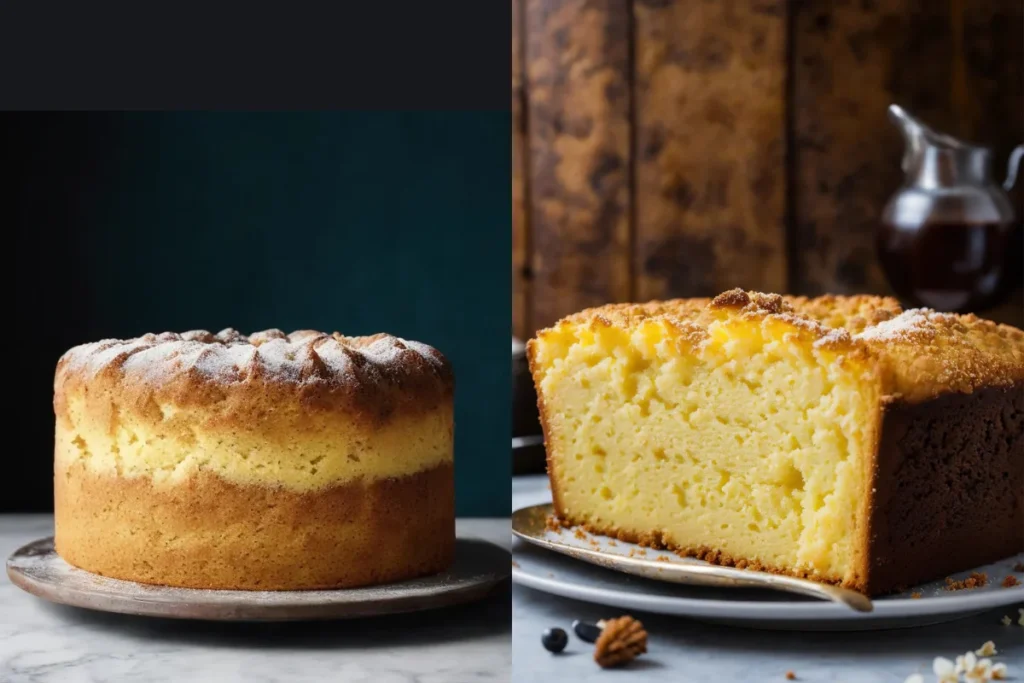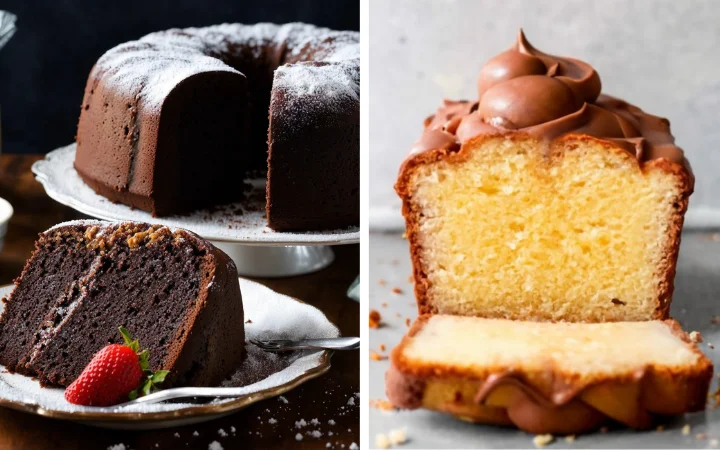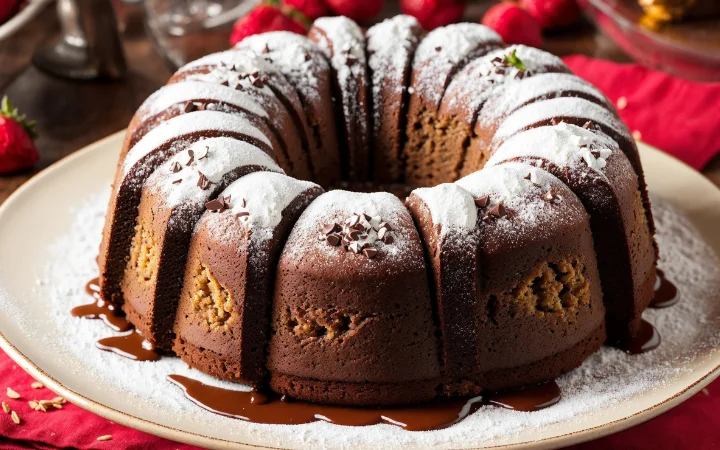In this comprehensive exploration, we delve into the delightful world of cakes, focusing on the intriguing question: “What makes a pound cake different from a regular cake?” From the rich history and fundamental ingredients to the subtle nuances that distinguish these two beloved types of cakes, we’ll uncover the secrets behind their unique textures, flavors, and baking techniques. Whether you’re a seasoned baker or a curious food enthusiast, this article promises to enlighten and inspire your culinary journey.
Exploring the World of Baking: Classic and Modern Approaches
Pound cake, a classic in the realm of baking, stands out with its simple yet rich composition. For a delicious variation, explore this ultimate guide to chocolate pound cake, which adds a rich chocolatey twist to the traditional recipe. Originating in an era when baking was more of an intuitive art, the traditional recipe required equal parts of butter, sugar, eggs, and flour. Over time, this formula has evolved, yet the cake’s core characteristics of a dense, buttery texture and moist crumb remain unchanged.
On the flip side, a broader category of cakes encompasses a wide array of styles and recipes. Ranging from light and airy sponge cakes to decadent chocolate cakes, these are defined by their varied ingredients and leavening agents, such as baking powder or soda, which give them a fluffier and softer texture.
Historical Insights into Pound Cake
The pound cake’s history is as rich as its flavor, dating back to the early 1700s in Europe. It gained popularity for its simplicity and the ease of remembering the recipe. For a more detailed history of pound cake, check out this insightful article from Windy City Baker. The traditional pound cake is known for its dense texture and rich flavor, primarily due to the high content of butter and eggs.
A World of Cakes: Exploring Diversity
Regular cakes, meanwhile, are a testament to the creativity and diversity in the world of baking. Discover the various types of regular cakes and their unique characteristics in this comprehensive guide from Epicurious. These cakes vary significantly in terms of ingredients, texture, and flavor. From the light and spongy angel food cake to the moist and rich carrot cake, each type offers a unique taste experience. The use of various leavening agents, flavorings, and additional ingredients like cocoa, fruits, or nuts, allows for a wide range of textures and flavors in regular cakes.

In the next part, we’ll dive deeper into the key differences between pound cakes and regular cakes, exploring how ingredients, texture, and baking methods set them apart in the delightful world of baking.
Delving into Cake Differences
When distinguishing pound cake from regular cake, several key factors come into play. Learn more about these differences in this informative article from Allrecipes. The differences lie not only in the ingredients but also in the texture, flavor, and baking methods. Let’s break down these aspects to understand what sets these two types of cakes apart.
Analyzing Key Ingredients
Pound cake, true to its name, traditionally uses equal weights of butter, sugar, eggs, and flour. This balance creates a rich and dense cake. In contrast, regular cakes often incorporate additional ingredients like milk, baking powder, or baking soda. These additions make regular cakes lighter and fluffier than pound cakes.
Understanding Texture in Baking
The texture of a pound cake is notably denser and heavier compared to regular cakes. This is due to the high ratio of eggs and butter, which contributes to its firm yet moist crumb. Regular cakes, on the other hand, have a lighter and airier texture, thanks to leavening agents that cause them to rise more during baking. If you’re curious about why your chocolate pound cake might be dry, check out this article on why is my chocolate pound cake dry for tips and solutions.
Diverse Flavors in Cake Baking
Pound cakes are renowned for their buttery and rich flavor, often enhanced with vanilla or citrus zest. To learn about proper storage, read about whether chocolate pound cake needs to be refrigerated to maintain its freshness and flavor. The simplicity of the ingredients allows the butter’s flavor to shine through. Regular cakes, however, offer a broader range of flavors. From chocolate and fruit to spices and nuts, the possibilities are endless, making regular cakes more versatile in terms of flavor.
Methods Behind Cake Making
Preparing the Batter
The process for making the traditional cake involves creaming butter and sugar, then adding eggs and flour. This step is vital for its signature dense texture. Other cakes might also use the creaming method but often involve sifting dry ingredients and folding them in to introduce air, creating a lighter texture.

Next, we’ll examine the role of each ingredient in the traditional cake and how they contribute to its unique characteristics. Join us as we continue exploring the delightful world of these cakes
The Art of Ingredient Balancing
The charm of a pound cake lies in its simplicity and the harmonious balance of its ingredients. Each component plays a pivotal role in creating the cake’s signature texture and flavor. Let’s delve into the key ingredients of pound cake and their specific contributions.
Importance of Butter in Pound Cake
Butter is the heart of a pound cake, adding richness and flavor. Understand the role of butter in pound cake in greater detail with this article from Baking Sense. It not only adds richness and flavor but also contributes to the cake’s tender crumb. The creaming of butter and sugar introduces air into the batter, aiding in the cake’s slight rise and dense texture.
The Effect of Eggs and Flour Ratios
Eggs are crucial in pound cake for structure and moisture. They bind the ingredients together and add to the cake’s density. The flour, in the right proportion, ensures the cake holds its shape while remaining tender.
Role of Sugar and Flavorings
Sugar in pound cake isn’t just for sweetness; it also adds to the texture. It helps in the creaming process and contributes to the golden crust. Flavorings like vanilla or citrus zest enhance the cake’s taste, complementing the buttery flavor.

In the next part, we’ll explore the creative twists bakers can add to traditional pound cake recipes, including various flavors and adaptations. Stay tuned for more delicious insights!
Creativity in Pound Cake Recipes
Pound cake, steeped in tradition, offers a canvas for creativity. Explore creative twists on traditional pound cake with these recipes from Southern Living. Bakers around the world have experimented with this classic recipe, introducing exciting flavors and adaptations. Let’s explore some of these innovative variations.
Incorporating Different Flavors and Add-ins
Pound cakes can be transformed with a variety of flavors and add-ins. Ingredients like cocoa powder, lemon zest, or almond extract can add a new dimension to the classic taste. Mix-ins like chocolate chips, nuts, or dried fruits can also create interesting textures and flavors.
Gluten-Free and Vegan Variations
Adapting Recipes for Dietary Preferences
Adapting recipes to suit dietary needs is becoming increasingly popular. Gluten-free options like almond or coconut flour can substitute traditional wheat flour. For a vegan alternative, plant-based butters and egg replacements like applesauce or mashed bananas help retain the texture while meeting dietary requirements.
Regional and Cultural Variations
Globally, recipes reflect local flavors and ingredients. Some regions might include unique additions like local fruits, spices, or savory elements, providing a distinct take on the traditional recipe.

In the following section, we’ll answer common questions, shedding light on typical queries and misconceptions. Stay tuned for valuable insights and tips
Frequently Asked Questions About Pound Cake
Pound cake, with its rich history and simple elegance, often raises questions among baking enthusiasts. For more FAQs about pound cake, visit Fannie Bragg. In this section, we address some of the most common inquiries about pound cake, providing clarity and tips.
Can the Classic Cake Be Made Without Butter?
While butter is traditionally essential, alternatives like margarine or vegetable oil can be used. These substitutes might slightly change the flavor and texture but are suitable for different dietary needs.
How Do Textures Vary Between the Two Cake Types?
The traditional cake is characterized by its dense and moist texture, thanks to a high ratio of eggs and butter. The more varied category, often lighter and airier, benefits from leavening agents like baking powder or soda, enhancing their rise and fluffiness.
Is the Traditional Cake Suitable for Layered Cakes?
Its dense structure makes it ideal for layered cakes, providing stability. The firm texture supports various frostings and fillings, making it a versatile choice for different cake designs.
In our final thoughts, we’ll highlight the primary distinctions between these two beloved types of cakes. Stay tuned for our concluding insights and baking tips
Conclusion: Celebrating Cake Diversity
As we conclude our journey through the world of pound cake and regular cake, it’s clear that both have unique charms. For further insights, check out this comparison on Gourmet Dandy, it’s evident that both types of cakes have their unique charm and appeal. Each one, with its distinct qualities and flavors, caters to a variety of tastes and occasions.
Recap of Key Differences
To summarize, the distinctions between these two cake types lie in their composition, feel, and preparation methods. The classic version, known for its equal measurements of core ingredients, offers a dense and buttery experience. In contrast, the more varied category includes a range of ingredients and leavening agents, resulting in a lighter, airier texture and a broader array of flavors.
Personal Reflections and Recommendations
Whether you’re an aficionado of the traditional style or enjoy the variety offered by other cakes, the pleasure of baking and savoring these confections is undeniable. For the adventurous, consider adding a personal touch to the classic recipe or delve into the diverse options available in the other category to find your favorite.

In conclusion, the world of cakes offers a plethora of choices. Whether sticking to classic recipes or exploring new culinary paths, the key is to relish the baking process and enjoy the delicious results. Happy baking to all!
